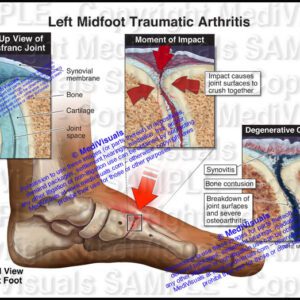-
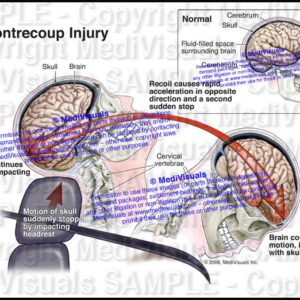
$395.00
Demonstrates the forces that cause the brain to impact on the inside of the skull during many types of collisions that can cause injuries to the brain even without evidence of a significant impact to the face or back of the head.
-
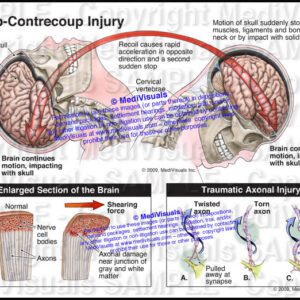
$395.00
Demonstrates how the brain impacts on the inside of the skull during violent acceleration-deceleration and deceleration-acceleration movements to result in shear injury or traumatic axonal injury even without a significant blow to the head.
-
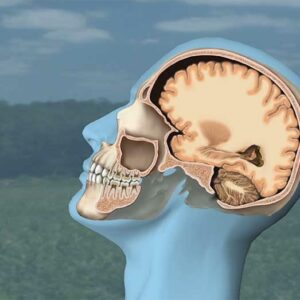
$995.00
Mild Traumatic Brain Injury – Rear Impact
-
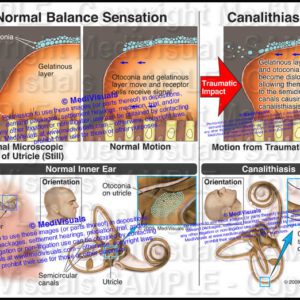
$395.00
Microscopic view of the normal motion of the inner ear vs. motion of the inner ear after a traumatic impact. Canalithiasis occurs when small particles disturb the flow of motion|which leads to benign paroxysmal positional vertigo.
-
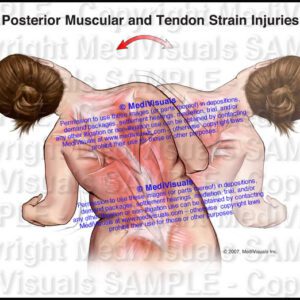
$395.00
Posterior view of back showing how muscle and tendon are strained during violent side-to- side movements such as side impact collisions.
-
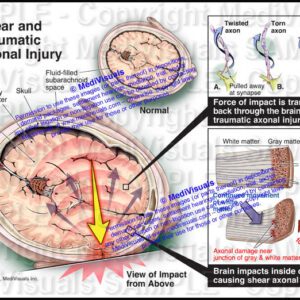
$395.00
Demonstrates how the brain impacts on the inside of the skull during an impact on the right side of the head. Arrows indicate the forces that travel through the brain to result in shear injury or traumatic axonal injury.
-
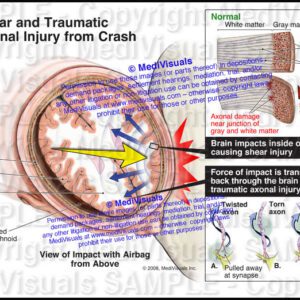
$395.00
Axial view of brain impacting inside of the skull as the head impacts an airbag. Arrows indicate the forces involved in the collision that travel throughout the brain and result in shear and traumatic axonal injury (TAI) or diffuse axonal injury (DAI).
-
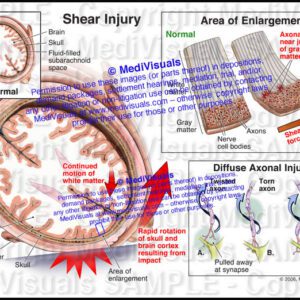
$395.00
Demonstrates how the brain impacts on the inside of the skull during a right frontal (forehead) impact to result in shear injury or traumatic axonal injury even without a significant blow to the head.
-
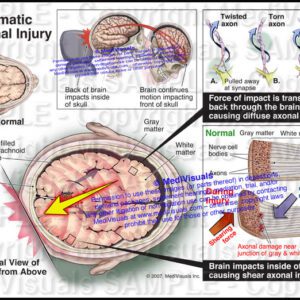
$395.00
Demonstrates how the brain impacts on the inside of the skull during an impact with a headrest to result in shear injury or traumatic axonal injury.
-
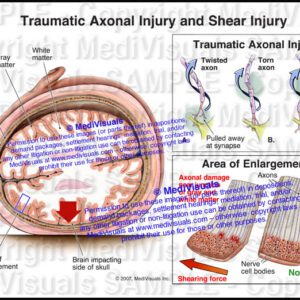
$395.00
Demonstrates how the brain impacts on the inside of the skull during a left side (parietal) impact to result in shear injury or traumatic axonal injury even without a significant blow to the head.
-
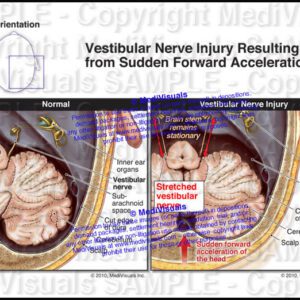
$395.00
Demonstrates the mechanism of injury — as the brain stem and skull move in different directions during a violent impact|stretch injuries to the vestibular nerve can occur. This type of injury is especially significant when supporting arguments of brain injuries occurring as a result of traumatic forces to the head (without an impact) because if forces were significant enough to damage the vestibular nerve|the forces were also likely sufficient to cause shear or traumatic axonal injury.



